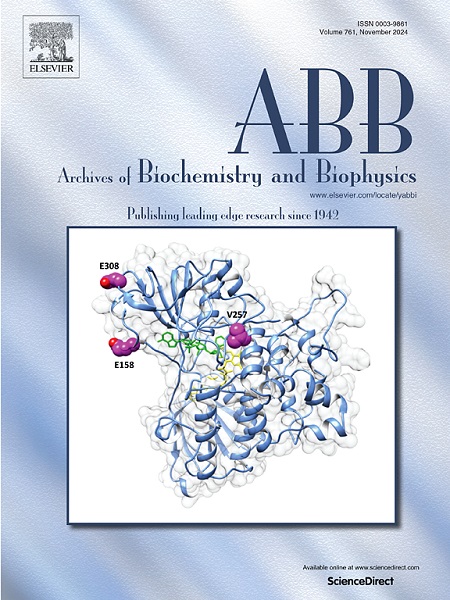Dual role of Tropomyosin-R160 in thin filament regulation: Insights into phosphorylation-dependent cardiac relaxation and cardiomyopathy mechanisms
IF 3.8
3区 生物学
Q2 BIOCHEMISTRY & MOLECULAR BIOLOGY
引用次数: 0
Abstract
β-adrenergic stimulation causes cell signaling that targets modulation of calcium levels as well as sarcomeric proteins to increases contractility. PKA phosphorylation of serine residues 23 and 24 of troponin I reduces calcium sensitivity and promotes cardiac relaxation. Our protein-protein docking and molecular dynamics studies revealed that Tpm-R160 is adjacent to these phosphorylation sites. In addition, Tpm-R160 has been identified as a disease-causing mutation site. Here, we investigated Tpm-R160's role in thin filament regulation and its interaction with phosphorylated TnI. Using in vitro motility assays, calcium sensitivity was quantified in reconstituted thin filaments containing various combinations of a phosphomimetic version of troponin I (TnI-S23/24D) and tropomyosin where the charge and potential for electrostatic interaction was removed by mutation of Tpm-R160 to a neutral alanine (Tpm-R160A). As expected, the phosphomimetic TnI (TnI-S23/24D) reduced calcium sensitivity in thin filaments with wild-type tropomyosin. However, the phosphorylation-like effect was diminished in the presence of the Tpm-R160A mutation. Notably, Tpm-R160A alone, when paired with wild-type TnI, also showed reduced calcium sensitivity, indicating that mutation of Tpm-R160 affects thin filament regulation in the absence of phosphorylation. Our findings indicate that Tpm-R160 has a dual role in thin filament regulation: (1)it is crucial for proper interaction between phosphorylated TnI and Tpm-R160 during adrenergic-induced cardiac relaxation, and (2) at the same time, the arginine residue itself is additionally required for maintenance of overall calcium sensitivity. These results provide key insight into the molecular defects underlying cardiomyopathy and a framework for development of therapeutic strategies targeting Tpm-R160 interactions. (249 words)

求助全文
约1分钟内获得全文
求助全文
来源期刊

Archives of biochemistry and biophysics
生物-生化与分子生物学
CiteScore
7.40
自引率
0.00%
发文量
245
审稿时长
26 days
期刊介绍:
Archives of Biochemistry and Biophysics publishes quality original articles and reviews in the developing areas of biochemistry and biophysics.
Research Areas Include:
• Enzyme and protein structure, function, regulation. Folding, turnover, and post-translational processing
• Biological oxidations, free radical reactions, redox signaling, oxygenases, P450 reactions
• Signal transduction, receptors, membrane transport, intracellular signals. Cellular and integrated metabolism.
 求助内容:
求助内容: 应助结果提醒方式:
应助结果提醒方式:


